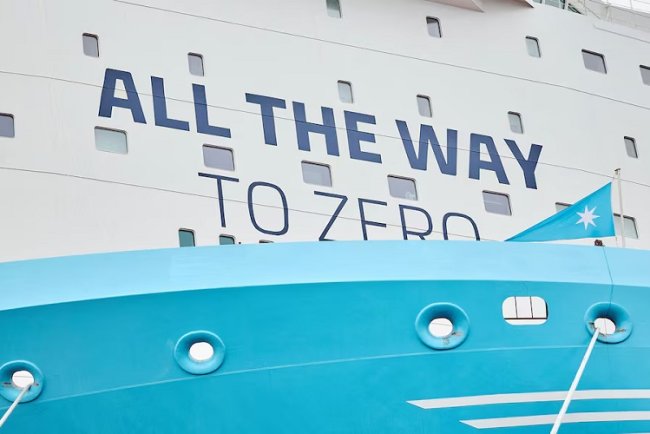Incorporating Scope 3 Emissions Into Your CDP Report: Key Challenges & Practical Solutions
Scope 3 is not a check box of compliance, it is a journey, writes the author

As the world works toward carbon emission limits and phases out fossil fuels, there is one term that has increasingly made its way into boardroom meetings and investor briefs: Scope 3 emissions. Scope 3 emissions have often been undervalued or unreleased, but they are the most complex and most important of corporate climate disclosures. For many companies and industries with high emissions, Scope 3 emissions can comprise over 70 to 90 percent of their carbon total. Yet, they are also least understood, tracked, and disclosed.
This discrepancy will continue to be harder to ignore as disclosure frameworks become more popular, such as CDP (formerly the Carbon Disclosure Project). CDP is amongst the most credible environmental disclosure channels in the world, with over 23,000 companies that use it to report on climate risks, targets, and emissions. In India, CDP participation is steadily increasing, supported regulatively by nudges to comply with SEBI's BRSR Core, and investor pressure to disclose greater environmental transparency. As both international and domestic momentum grow, Indian companies will need to start looking more closely at the Scope 3 blind spot.
Why Scope 3 Matters in CDP Reporting
In recent years, CDP has enhanced its expectations for companies' Scope 3 reporting on all fronts. Now, the CDP framework explicitly links Scope 3 disclosures to overall performance scores - a significant change in the way CDP measures performance in corporate climate emissions leadership. Now, companies cannot expect to score highly for Climate action or Environmental leadership without a serious commitment to Scope 3 emissions strategy.
There are wider implications than just scoring. Scope 3 performance has become a proxy for measuring ESG ratings, future financial, investment, and lending opportunities, and company attractiveness as a supplier in local and global supply chains. Incomplete Scope 3 data reporting is now flagged by stakeholders as a potential "green-wash" indicator. Regulators - especially in Europe and more recently parts of Asia - are taking a harder line on full scope transparency.
With the global race to reduce emissions to meet the Paris climate agreement and net zero pledges, the stakes are higher than ever for companies who do not make a serious investment in addressing Scope 3. These companies risk not only falling behind on compliance but also competitiveness.
Key Challenges in Scope 3 Reporting
While Scope 3 is immensely impactful, it remains one of the most challenging categories to assess and disclose. Some contributing constraints include:
1. Data Availability and Quality: Most Scope 3 emissions are produced outside a company’s direct control; these emissions can originate with suppliers, logistics service providers, distributors, or end users. Data collection is particularly time consuming and resource expensive for making accurate and complete assessments with suppliers and parties external to a company.
2. Methodological Uncertainty: Companies often struggle making the choice between spend based or activity based calculations, and then determining which appropriate emission factor to apply and preventing double counting.
3. Category Overload: With fifteen distinct categories, ranging from business travel to the use of sold products, many companies are faced with overwhelming choices. Not all of these categories are equally material, they may have different data availability issues, or meaningful hindrances when collecting or engaging data from supply chain partners. Distinguishing which emission categories are meaningful can be challenging.
4. Limited Supplier Engagement: In some companies or in markets like India that rely on fragmented supply chains, many vendors may be small or medium enterprises lacking the capacity or awareness of climate reporting. The organizational and cultural barriers to engage meaningfully with vendors present some unique challenges.
5. Capability and Tool Gaps: Internal sustainability teams often report being limited in terms of both technical expertise and useful digital tools to meet evolving CDP expectations. The manual data collection processes, and disconnected reporting across the organization means that reporting fatigue and inefficiencies may be widespread.
Practical Steps to Strengthen Scope 3 CDP Performance
While the obstacles are substantial, they are not impossible to overcome. Businesses can take a structural, phased approach to enhance their disclosures related to Scope 3:
1. Start with Materiality: Map your value chain and benchmark against peers to enable identification of the Scope 3 categories that are relevant to your sector. Decide on 3 or 4 initial categories to focus on first. Pick the categories that are most material, and data is easier to access.
2. Select a Scalable Estimation (if any) Approach: If you lack supplier specific data, start with spend based estimates, but build a roadmap for improving to an activity based approach.
3. Create Cross Functional Accountability: Scope 3 reporting cannot depend solely on the ESG or sustainability team. You require involvement from purchasing, operations, logistics and finance.
4. Engage Suppliers: Include sustainability expectations in the supplier contracts and onboarding processes. Provide suppliers with simple templates or webpages to source emissions reporting and ease the process together.
5. Use Technology: Invest in carbon accounting applications and those that pertain to your digital supply chain, to make it easier to collate, measure and report, which can reduce reporting fatigue.
6. Utilize Global Standards: Ensure your disclosures reflect international frameworks e.g. Science Based Targets initiative, GHG Protocol etc. A CDP scoring framework may have a preference for alignment and authenticity.
Looking Ahead: Scope 3 as the Differentiator
Now that the climate agenda is reaching a global tipping point, Scope 3 quickly appears to establish the line between companies doing the minimum and those that are genuinely future ready. In many ways, Scope 3 is a litmus test for environmental authenticity. It demonstrates if a company's climate commitments are beyond merely their boundaries to the larger ecosystem they are a part of.
For Indian companies, this is a period of challenges and opportunities. Companies that jump early on sustainable developing Scope 3 by developing internal processes and systems, educating their vendors and progressively adopting new technology that they will meet disclosure expectations and has reputational and operational benefits in the transition to a low carbon economy.
Scope 3 is not a check box of compliance, it is a journey. As a journey, companies can demonstrate themselves as the leaders in setting out transparent, dependable, practical and sustainable value chains that will direct the degree of business success in the coming climate conscious decade.
Views are personal
What's Your Reaction?
















